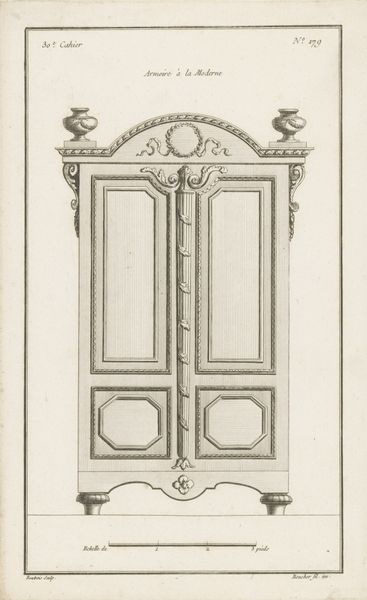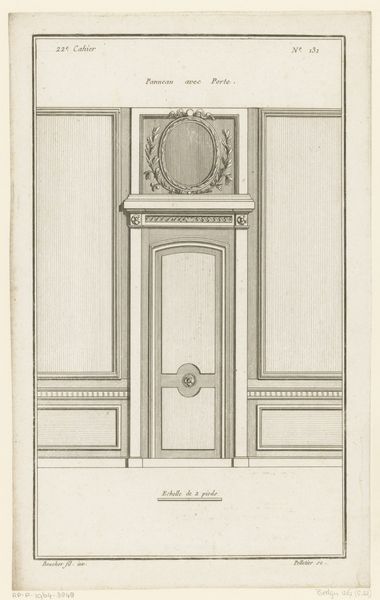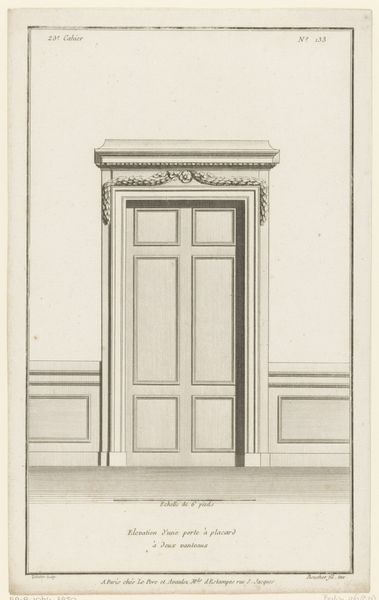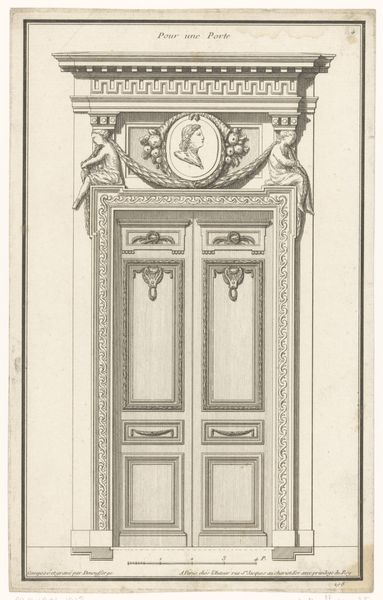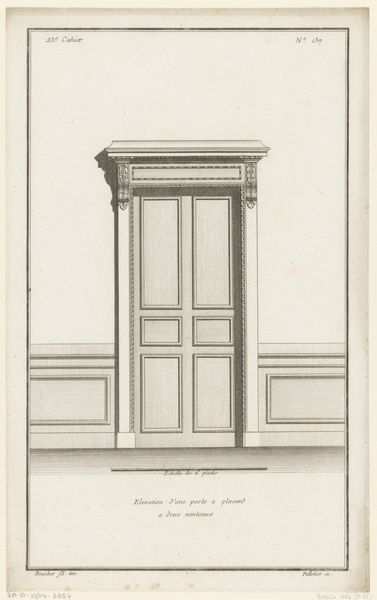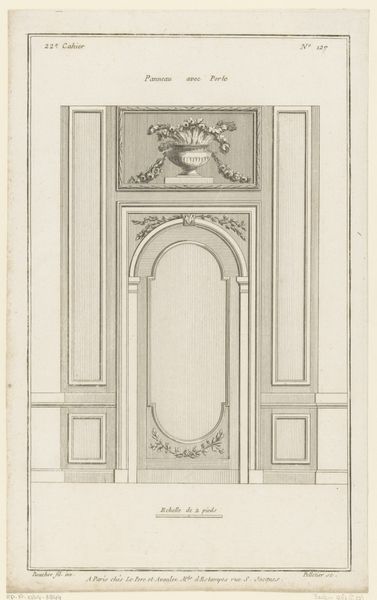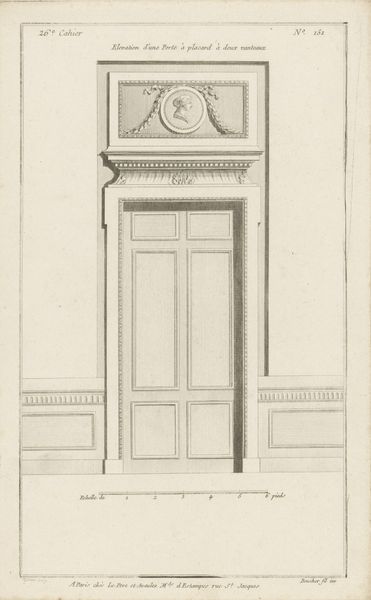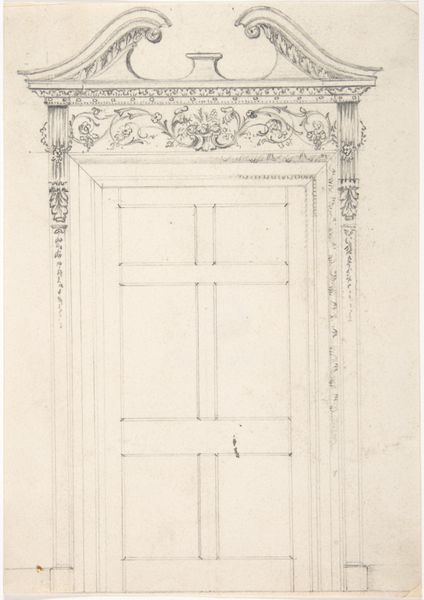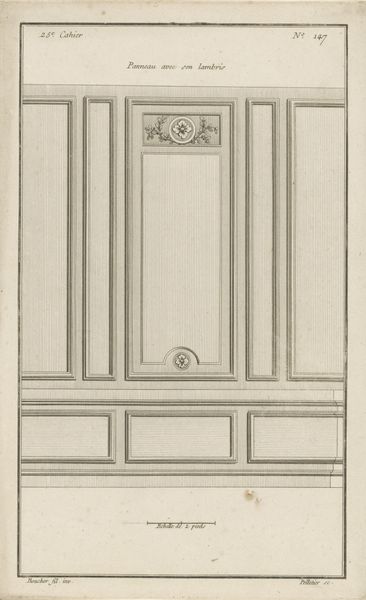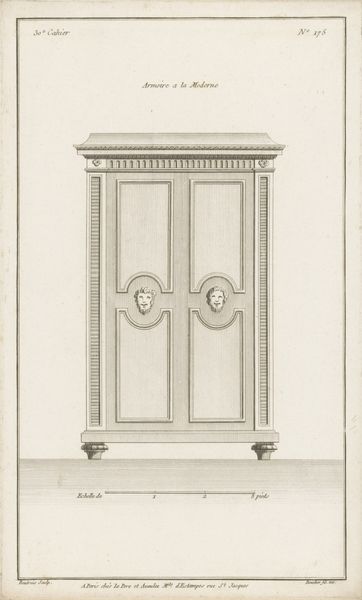
#
architectural sketch
#
aged paper
#
toned paper
#
homemade paper
#
parchment
#
historic architecture
#
traditional architecture
#
nude colour palette
#
architectural drawing
#
golden font
Dimensions: height 362 mm, width 227 mm
Copyright: Rijks Museum: Open Domain
Editor: We're looking at "Kruisvenster," an architectural drawing by Jean-François de Neufforge from 1763. It’s a very precise, symmetrical design for a cross-window, almost like a stage set. What catches your eye in this piece? Curator: Well, firstly, consider what a window *means*. This isn’t just about letting light in, is it? For centuries, a window has been a potent symbol. In religious art, light streaming through a window might signify divine presence, or revelation. Editor: I see. And what about here? Curator: In this case, notice the symmetry and the detail, the garlands and cresting. The window isn’t merely functional; it is communicating something about status, perhaps even an aspiration to elevated tastes. Think about the context. 1763. What does that evoke for you? Editor: Hmmm... the Enlightenment? An interest in reason and order? Curator: Precisely. And how are those ideals manifested here, visually? Editor: Through the very controlled lines, the balance in the composition. It’s a celebration of man-made beauty. The curves in the garlands, alongside the geometry in the panes... Curator: The garland motif also carries associations of festivity, welcome, perhaps even a sense of domestic tranquility. Does the muted palette temper any notion of ostentatiousness, do you think? Editor: Maybe. The toned paper and the subtle shading keep it elegant, less showy, hinting at lived-in luxury instead of shouting it. Curator: Indeed. And what does it whisper to us about the passage of time, and the echoes of cultural memory within such forms? Editor: It shows me how even something as functional as a window can become a powerful carrier of cultural meaning. The visual language evolves, but echoes of past symbolisms linger.
Comments
No comments
Be the first to comment and join the conversation on the ultimate creative platform.
